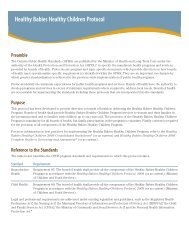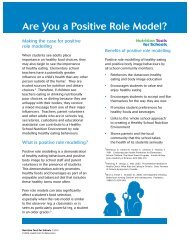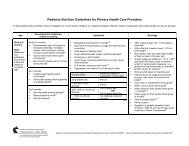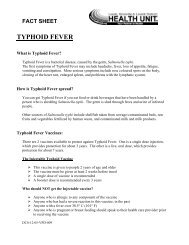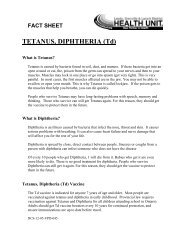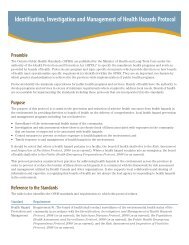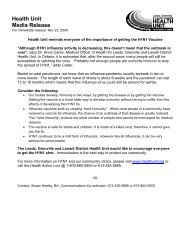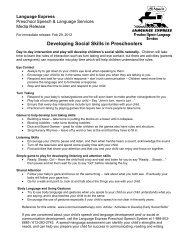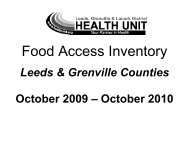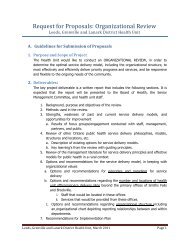Moving Upstream - Leeds, Grenville and Lanark District Health Unit
Moving Upstream - Leeds, Grenville and Lanark District Health Unit
Moving Upstream - Leeds, Grenville and Lanark District Health Unit
You also want an ePaper? Increase the reach of your titles
YUMPU automatically turns print PDFs into web optimized ePapers that Google loves.
Leadership Driver<br />
Organizational<br />
Goals<br />
Leadership Driver<br />
While it is understood that all staff within the <strong>Health</strong> <strong>Unit</strong> are leaders, the<br />
intent of this driver is to focus on those who have primary responsibility <strong>and</strong><br />
accountability for an organization’s performance. Good leadership is founded<br />
on ethics <strong>and</strong> values that reflect quality prinicples (19).<br />
What is the Issue?<br />
In the 2011 Organizational Review, strategic leadership was identified as a<br />
concern <strong>and</strong> management was seen to be more reactive than proactive (20).<br />
This was in part because the Directors were not able to provide strategic<br />
leadership in the absence of Managers. In 2012, a new organizational structure<br />
decreased the number of directors <strong>and</strong> increased the number of managers to<br />
address this concern. The Directors <strong>and</strong> Medical Officer of <strong>Health</strong> now form a<br />
Strategic Leadership Team to provide overall direction to the <strong>Health</strong> <strong>Unit</strong>.<br />
The 2010 Linda Duxbury survey on work <strong>and</strong> health indicated that the<br />
<strong>Health</strong> <strong>Unit</strong>’s workplace culture was inconsistent during times of change<br />
<strong>and</strong> staff reported ‘sometimes’ (but not consistently) being encouraged to<br />
provide feedback <strong>and</strong> participate during times of change by the leaders of<br />
the organization. Sometimes there was a lack of transparent, consistent<br />
communication <strong>and</strong> decision-making by management (21).<br />
Four of the categories in the Organizational St<strong>and</strong>ards (OS) have goals <strong>and</strong><br />
requirements that relate directly to the role of the Board of <strong>Health</strong>. Many of<br />
these OS requirements are part of the <strong>Health</strong> Promotion <strong>and</strong> Protection Act<br />
(HPPA) <strong>and</strong> are Ontario Council on Community <strong>Health</strong> Accreditation (OCCHA)<br />
st<strong>and</strong>ards. The <strong>Health</strong> <strong>Unit</strong> has received full accreditation by OCCHA for the<br />
past 20 years so many of the OS requirements are currently being achieved<br />
by the Board of <strong>Health</strong>. Two areas require more work - Board of <strong>Health</strong><br />
member orientation <strong>and</strong> training, <strong>and</strong> self-evaluation. Consideration of the<br />
OS in ongoing review of bylaws, policies <strong>and</strong> procedures will help ensure all<br />
requirements are being fully met.<br />
42<br />
<strong>Moving</strong> <strong>Upstream</strong>: 2013-2018 Strategic Plan<br />
<strong>Leeds</strong>, <strong>Grenville</strong> & <strong>Lanark</strong> <strong>District</strong> <strong>Health</strong> <strong>Unit</strong>



